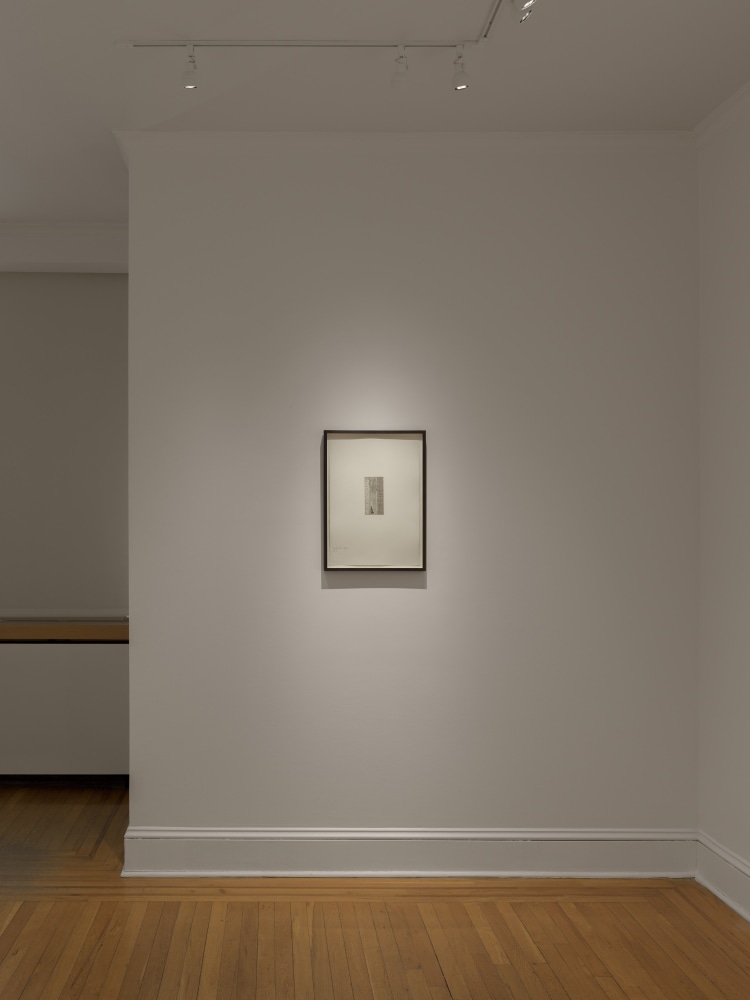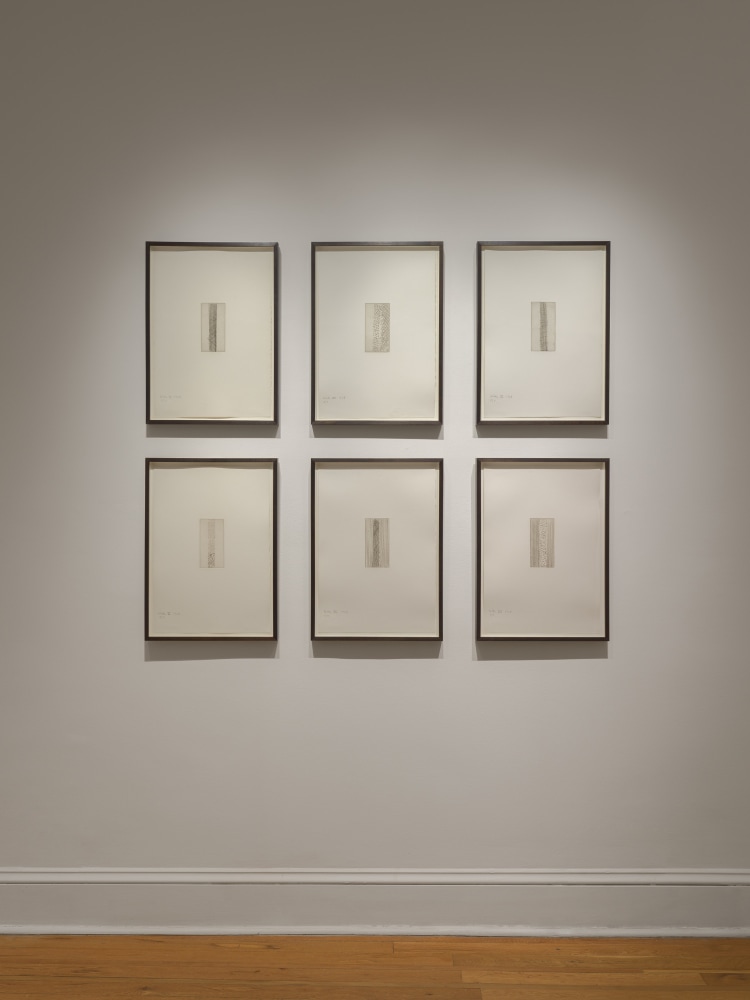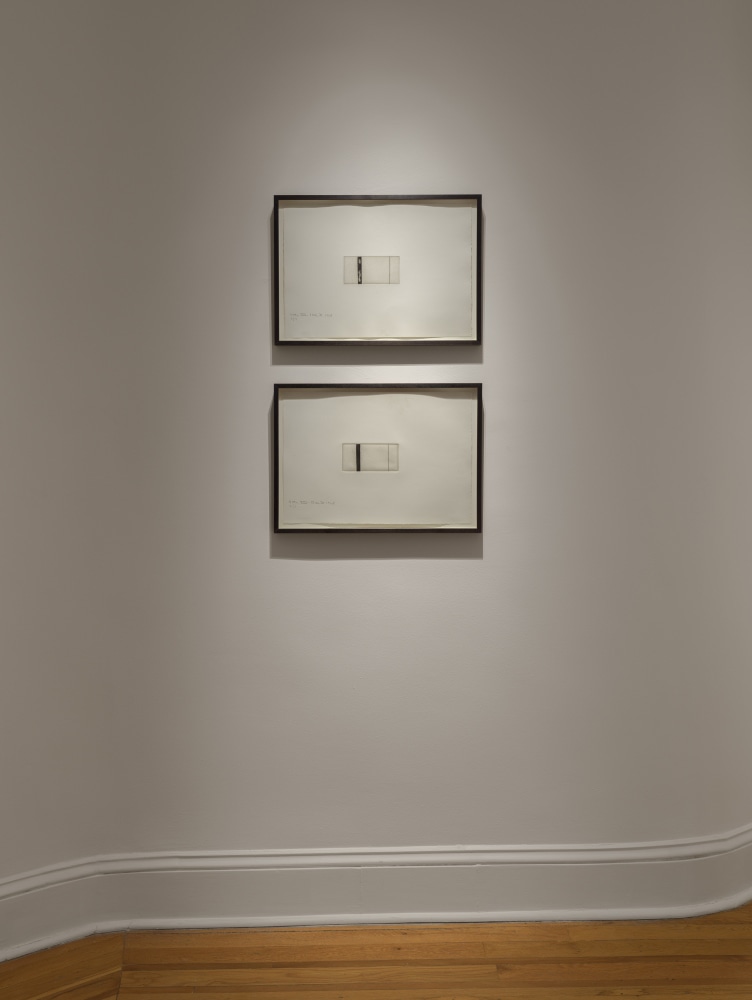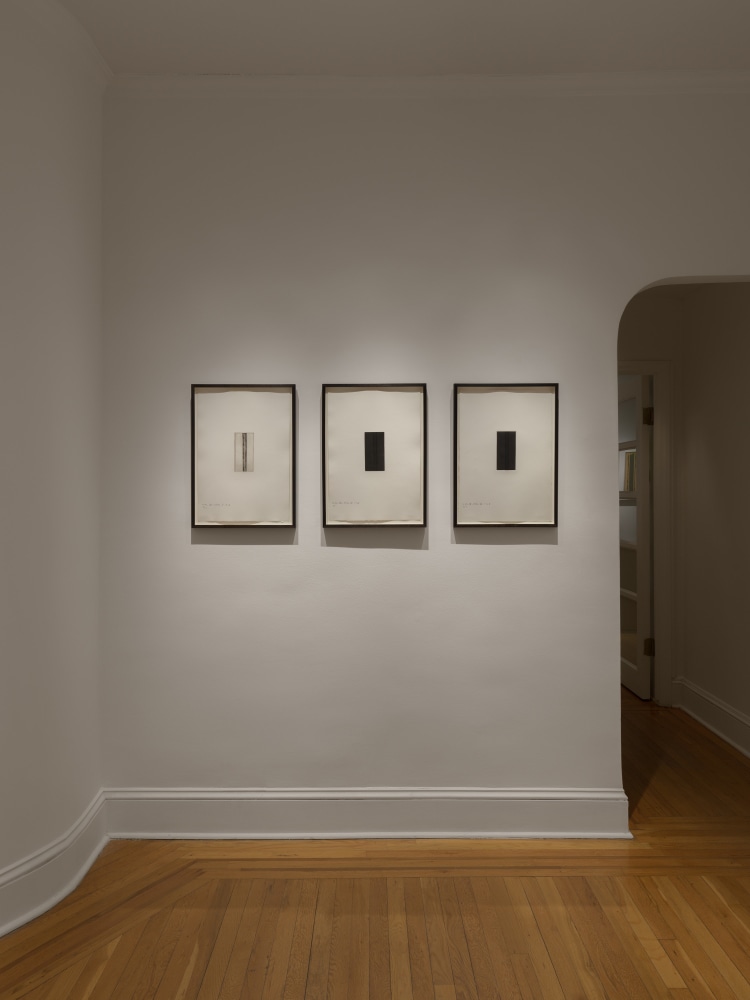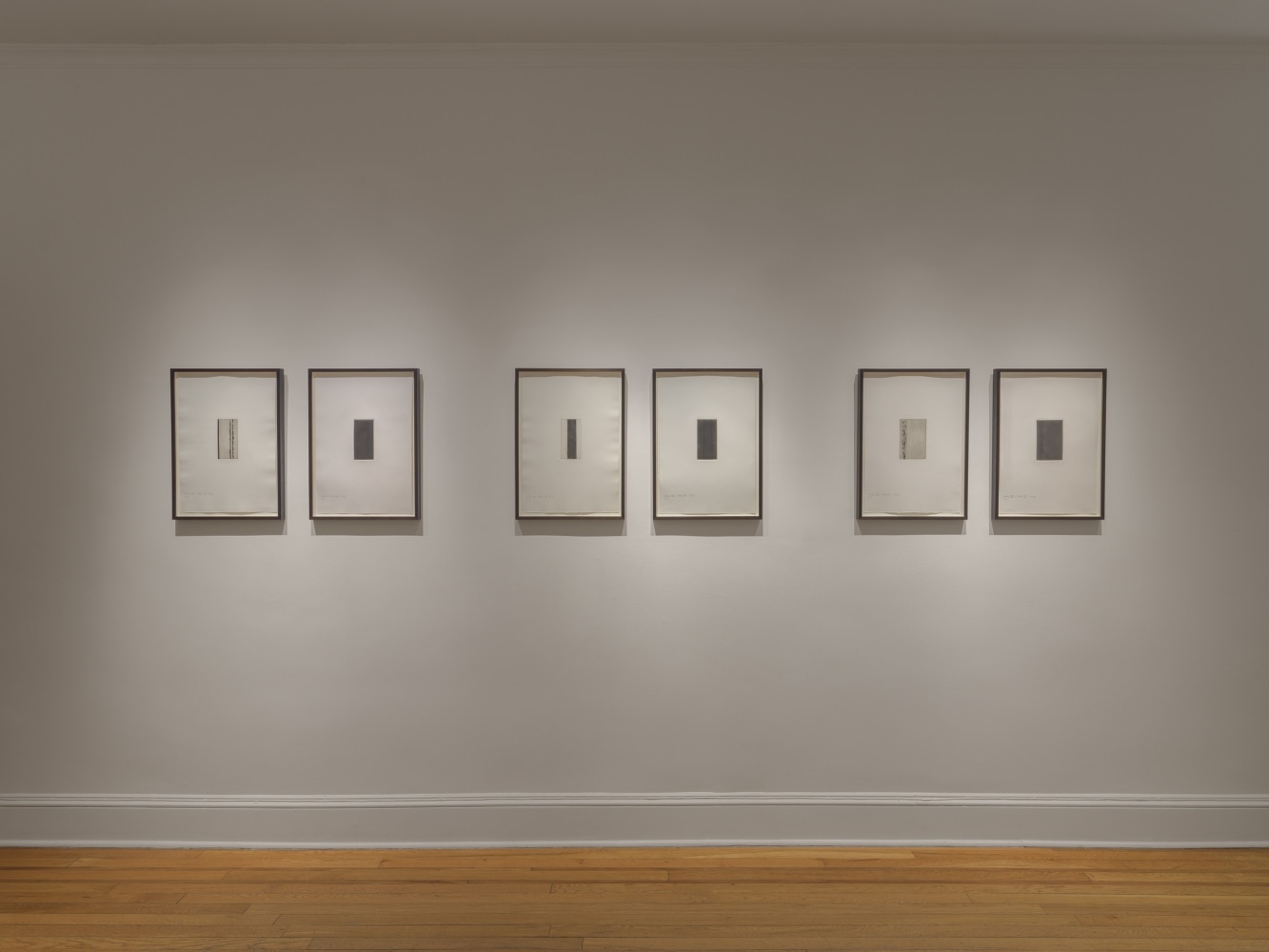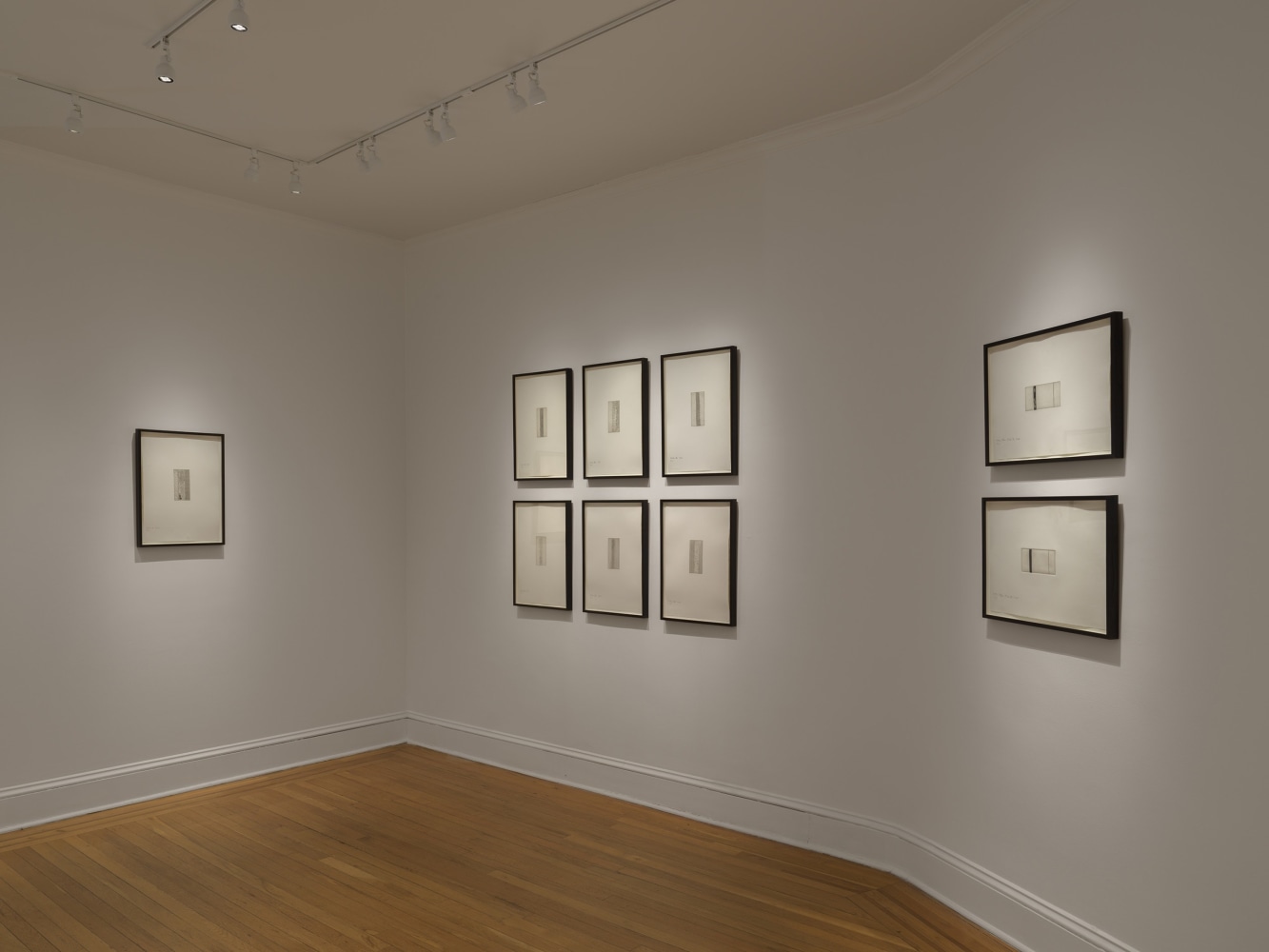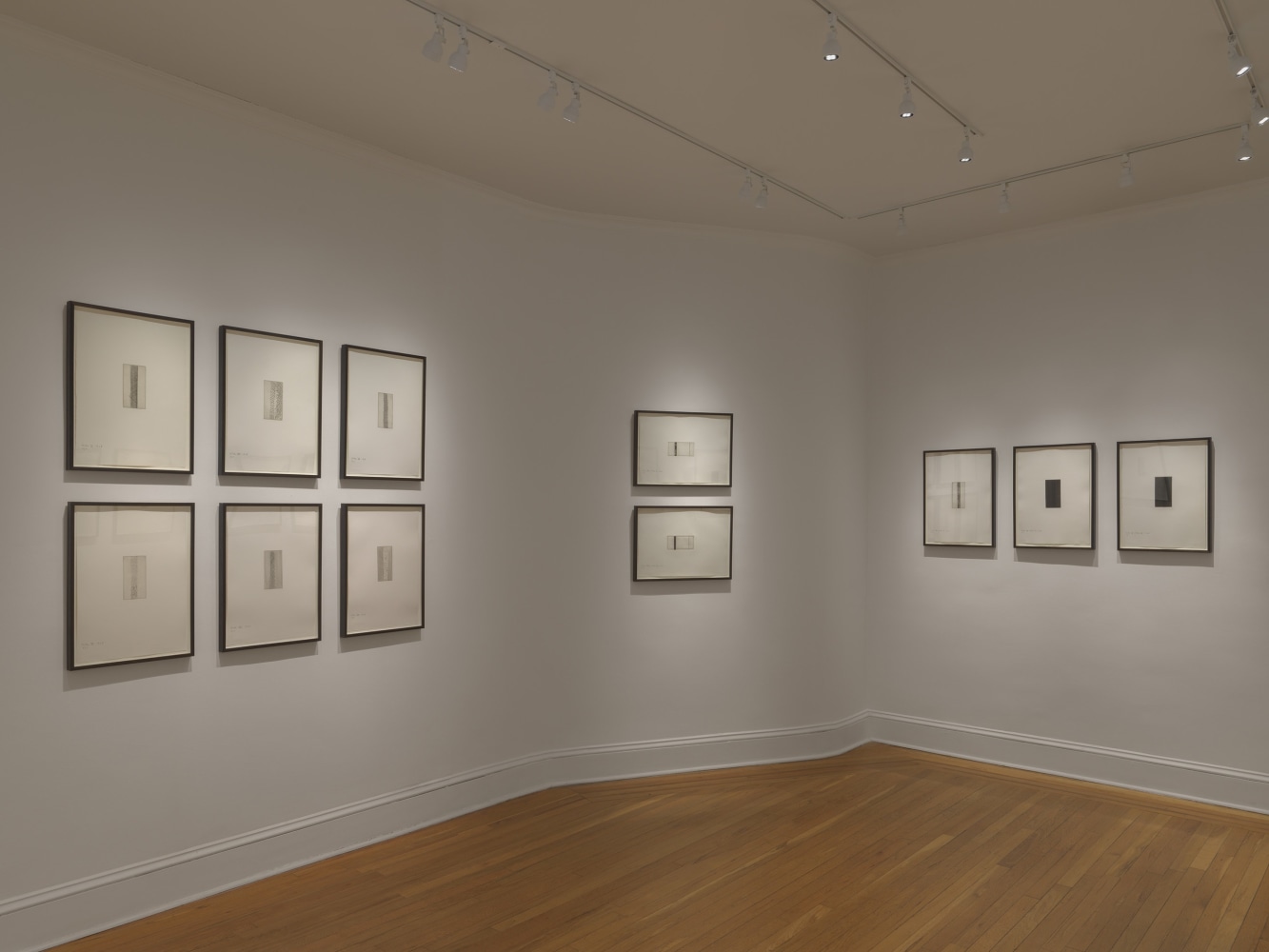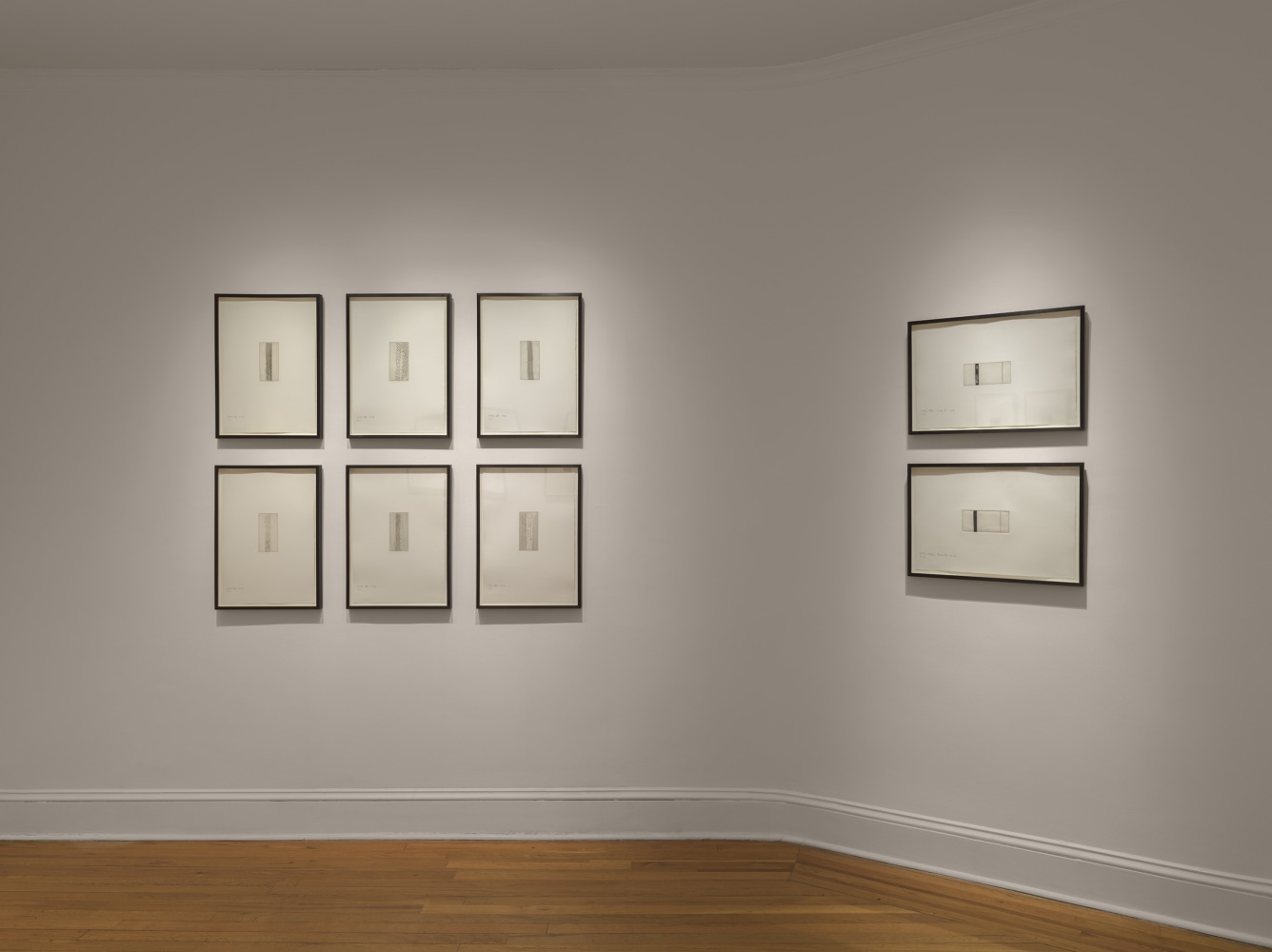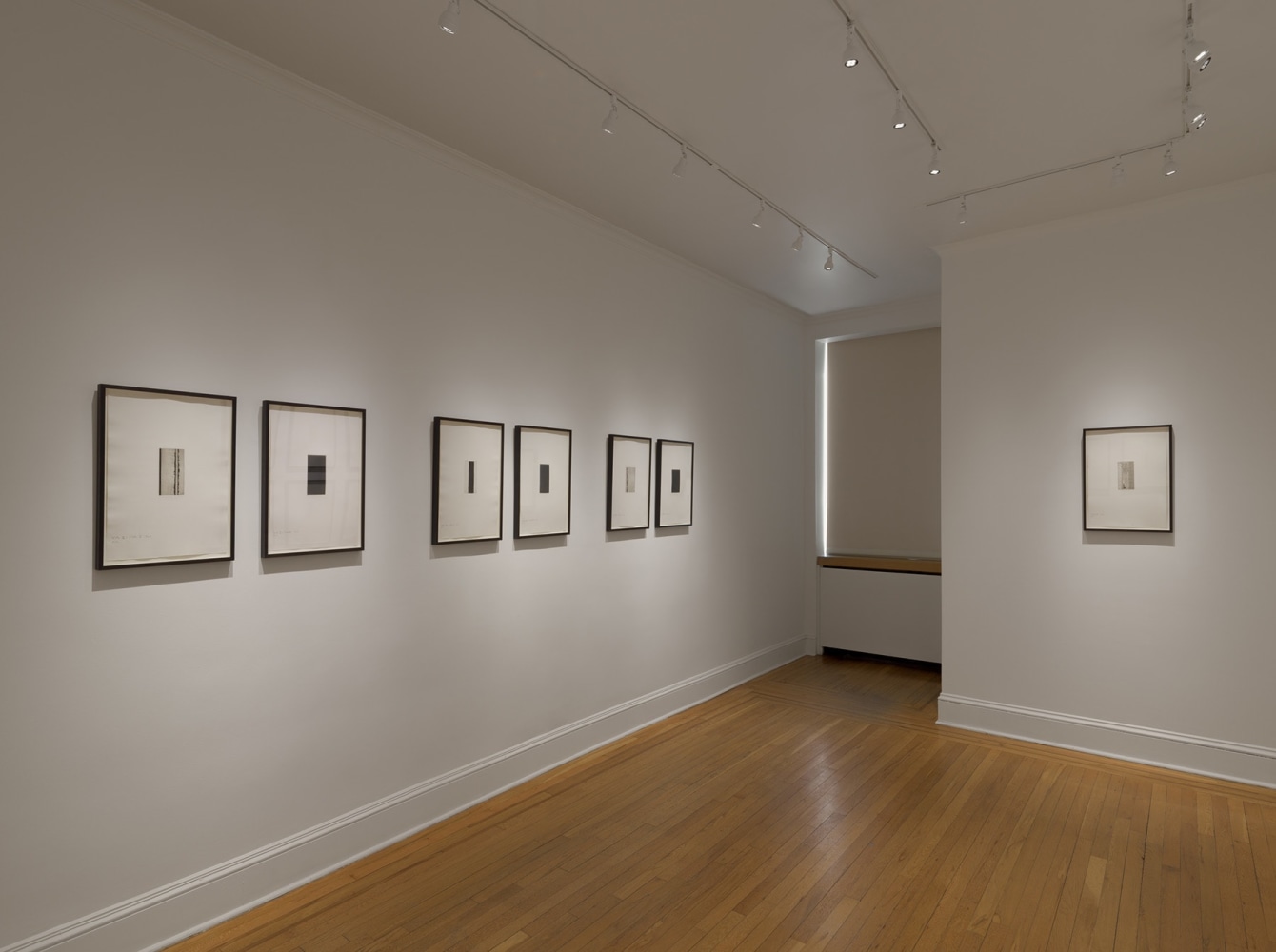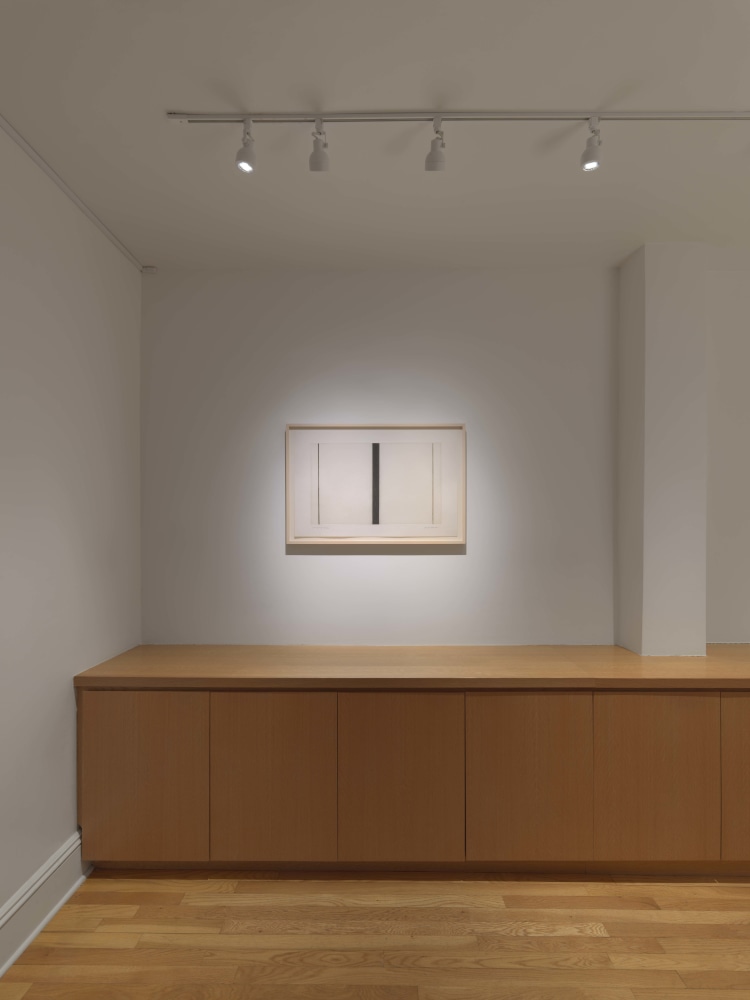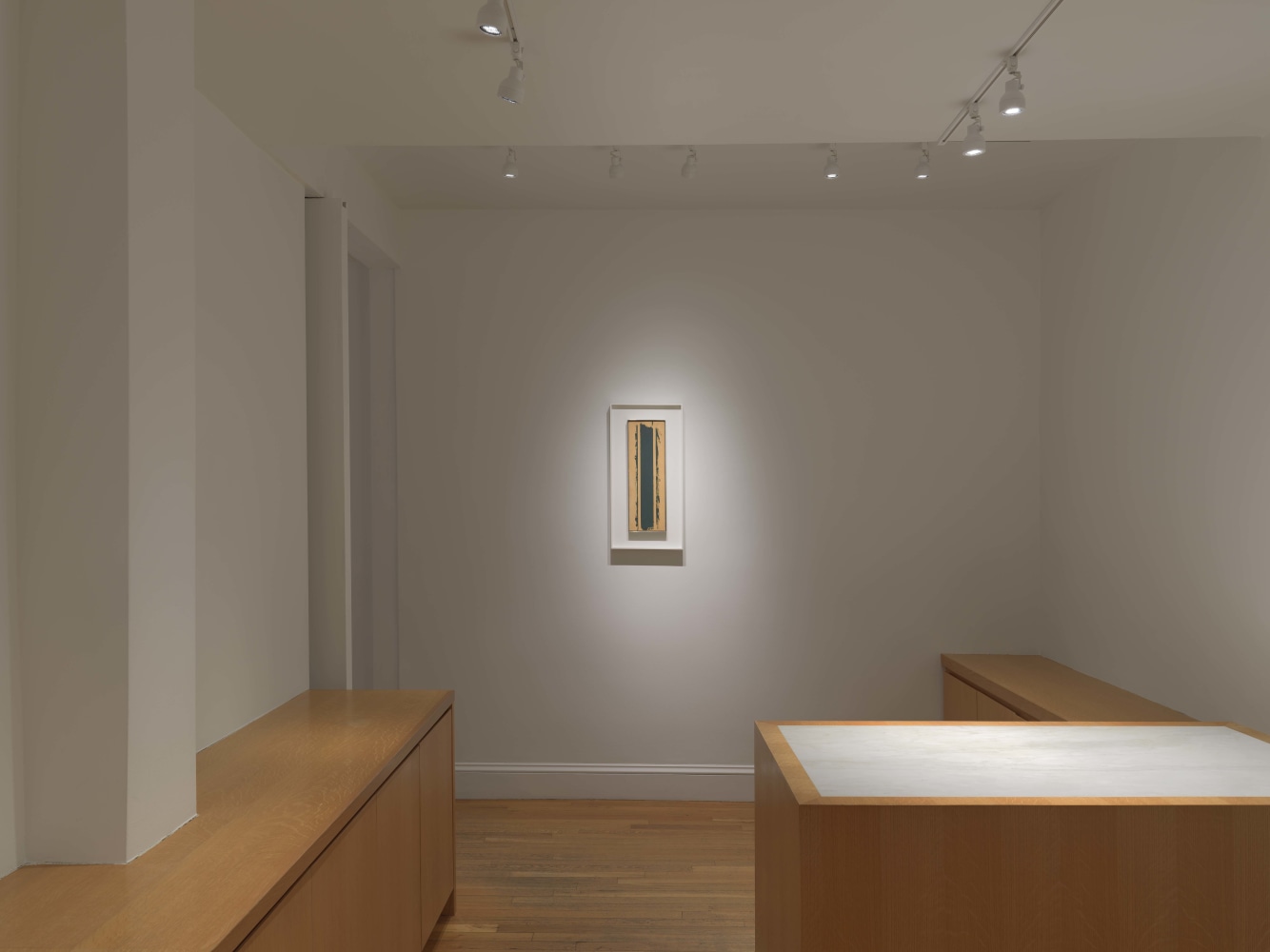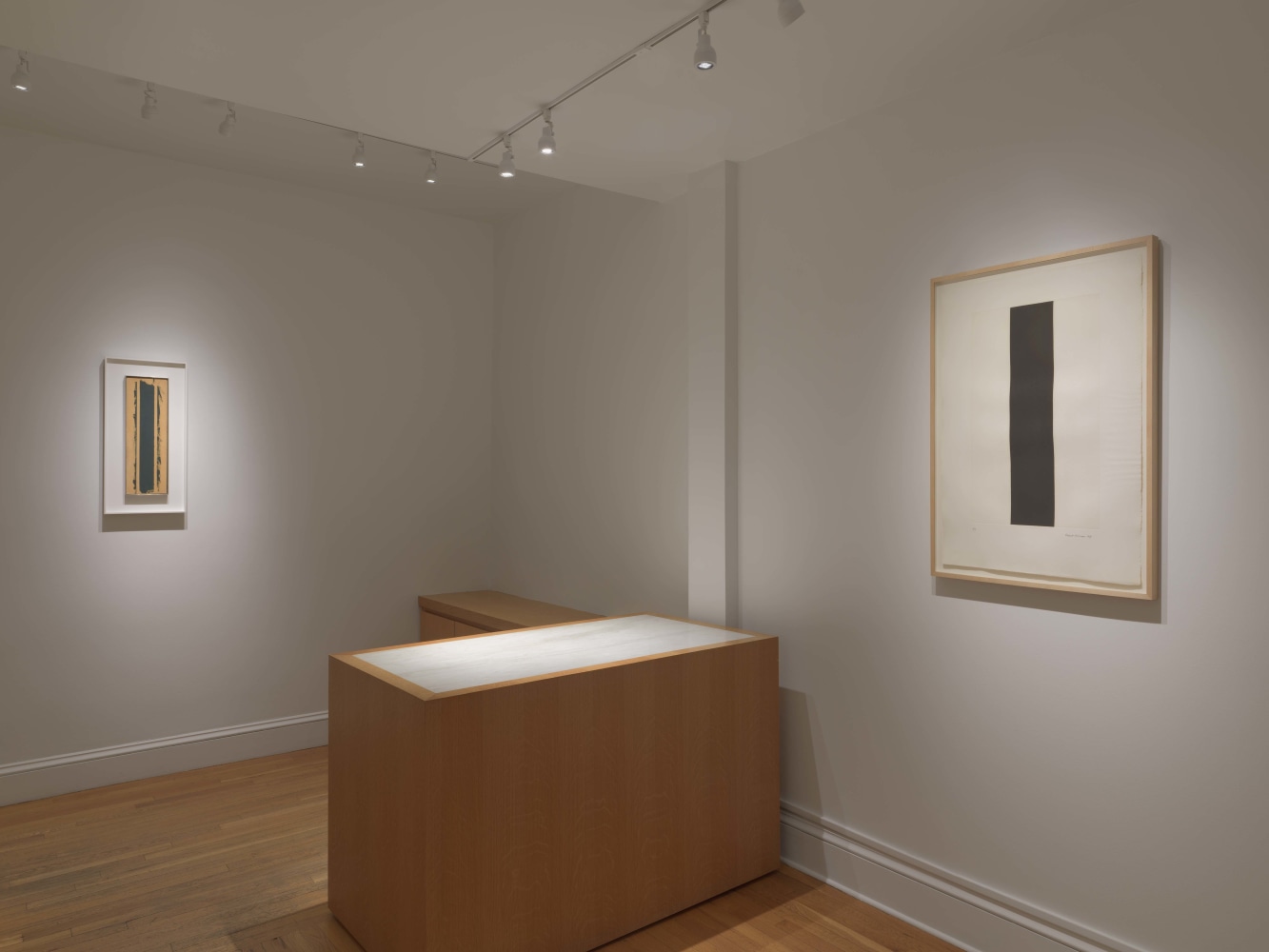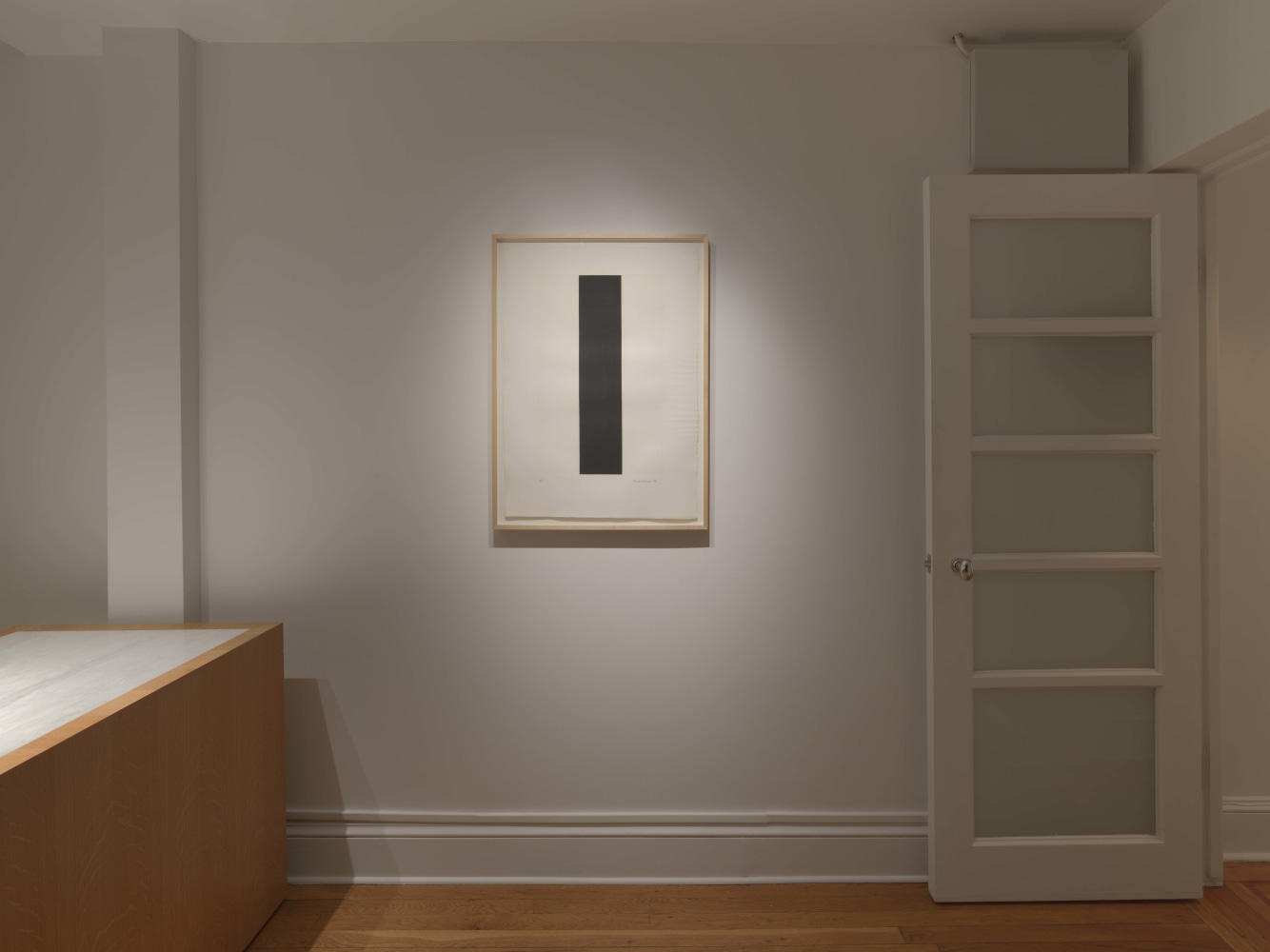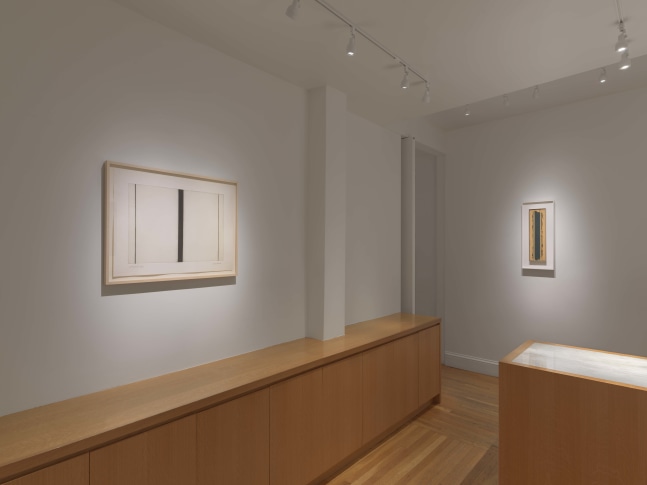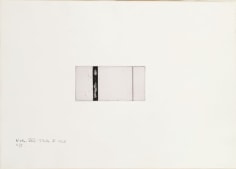Craig F. Starr Gallery is pleased to announce Barnett Newman: Notes, a comprehensive presentation of Newman’s 1968 suite of eighteen etchings, as well as a selection of closely related works.
In the spring of 1968, at the age of 63, Barnett Newman began to work in etching for the first time, in line with the artist’s restless search, in the words of Richard Shiff, “to create a new beginning.”[1] Earlier that spring, on April 4, 1968, Martin Luther King, Jr., had been assassinated in Memphis; soon thereafter, Newman agreed to contribute a print to a portfolio to commemorate the slain civil rights leader, organized by collector and Jewish Museum trustee Vera List.[2] Newman decided his submission would be an etching despite having never worked in the medium before and soon got to work familiarizing himself with the medium and its tools. As alluded to in their eventual title, Newman originally approached the Notes as preparatory work for this submission—what would ultimately be his Untitled Etching #1 (1969)—before deciding to publish them, unedited, as a portfolio: eighteen prints from twelve plates, all of which are on view here.
Newman worked on the small copper plates at home, in a process akin to drawing: intimate, exploratory, provisional. The first seven of the Notes are devoted to the exploration of linear elements, often loosely and informally etched: short vertical strokes, hatches, grids, as well as small, looping circular forms. Combinations and recombinations of these elements recur from one print to the next, not through a predetermined logic or systematic structure rather through the considered act of making itself, with Newman learning from each plate as he went.
The variations within the first seven Notes are structured by Newman’s repeated employment of a similar vertical format and triadic structure. Three was a number Newman imbued with great significance, and the artist created a group of works in the early 1960s that included references to that number in their title, including Treble (1960), on view here. In this work, Newman applied deep green paint along the central axis of the insistently vertical canvas, to which he had affixed two strips of masking tape. Newman often used tape to delineate his zips; here he painted over them before removing them, allowing the negative space of the unprimed canvas to structure the painting. Though painted earlier in the decade, the painting appears to have been on Newman’s mind during this period: it was ultimately featured on the announcement card for his 1969 exhibition at the Knoedler Gallery, as well as on the cover of the accompanying monograph authored by critic Thomas Hess, to whom Newman gifted the painting that same year.
A sharp compositional distinction exists between the first seven prints of the portfolio and the subsequent eleven. In the latter works, Newman replaced the linear exercises of the first seven prints with more controlled compositions, incorporating aquatint in order to achieve evenly inked “fields.” Newman’s emphasis on process here becomes even more visible to the viewer, as he chose to include the various states of these plates as equal components of the overall portfolio, often juxtaposing the high-contrast black-on-white compositions of the initial states with monochromatic tonal studies of black on black. Ordered in the sequence in which Newman worked on them, the prints allow the viewer to follow Newman’s material investigations as he himself experienced them.
One of the most important precedents for Newman’s Notes is his Stations of the Cross, a magisterial series of fourteen black-and-white paintings completed between 1958 and 1966. Rare self-contained series within Newman’s oeuvre, both the Stations and the Notes allow the viewer to access the openness and contingency of their creation, unfolding as they do temporally and spatially from work to work. Newman emphasized that this process, more visible to the viewer in these two series, undergirds his practice as a whole: “I began these paintings … the way I begin all my paintings—by painting.”[3]
After completing work on the Notes, Newman executed his final two etchings, Untitled Etching #1 and Untitled Etching #2 (1969), both on view here.[4] For these Newman worked on larger plates and with a straightedge, forgoing the freehand gestures of the Notes. The demarcation is signaled in symmetry of the untitled etchings: while Notes IX-XII toyed with the perception of symmetry, generating dynamism through near or apparent compositional balance, the central black zips of Untitled Etching #1 and especially #2 emphatically center their compositions.
The elegance of Untitled Etching #1’s spare composition and the clarity of its restricted palette of black ink on white paper recalls Newman’s 1961 painting Shining Forth (To George). The etching and the earlier painting are closely linked not only in their design but also in their commemorative purpose: Untitled Etching #1, as discussed above, was originally intended as a memorial to the life of Martin Luther King, while Shining Forth (To George) was created as an homage to the artist’s brother, who passed away in February 1961. Newman’s return to the composition of Shining Forth in Untitled Etching #1 indicates a break between the Notes and his two final untitled etchings: the direct link between his painting and his printing reflects corresponding shifts in scale, precision, clarity between the latter two and the smaller, more exploratory works that preceded them.
[1] Richard Shiff, “Introduction,” in Barnett Newman, Selected Writings and Interviews (New York: Alfred A. Knopf, 1990), p. xv.
[2] Newman later withdrew from the project when it changed to poster reproductions rather than original works of art. Barnett Newman (Philadelphia: Philadelphia Museum of Art, 2002), p. 296.
[3] Barnett Newman, “The Fourteen Stations of the Cross, 1958-1966,” in Selected Writings and Interviews, p. 189.
[4] Due to constant activity on a number of other projects, publication of the Notes portfolio was delayed. On July 4, 1970, the day he had planned to travel to the ULAE studio in West Islip to view the final proofs, Newman suffered a fatal heart attack. Ultimately, in 1978, ten years after Newman completed work on the plates, his widow Annalee Newman authorized the publication of the portfolio in a small edition of seven.

